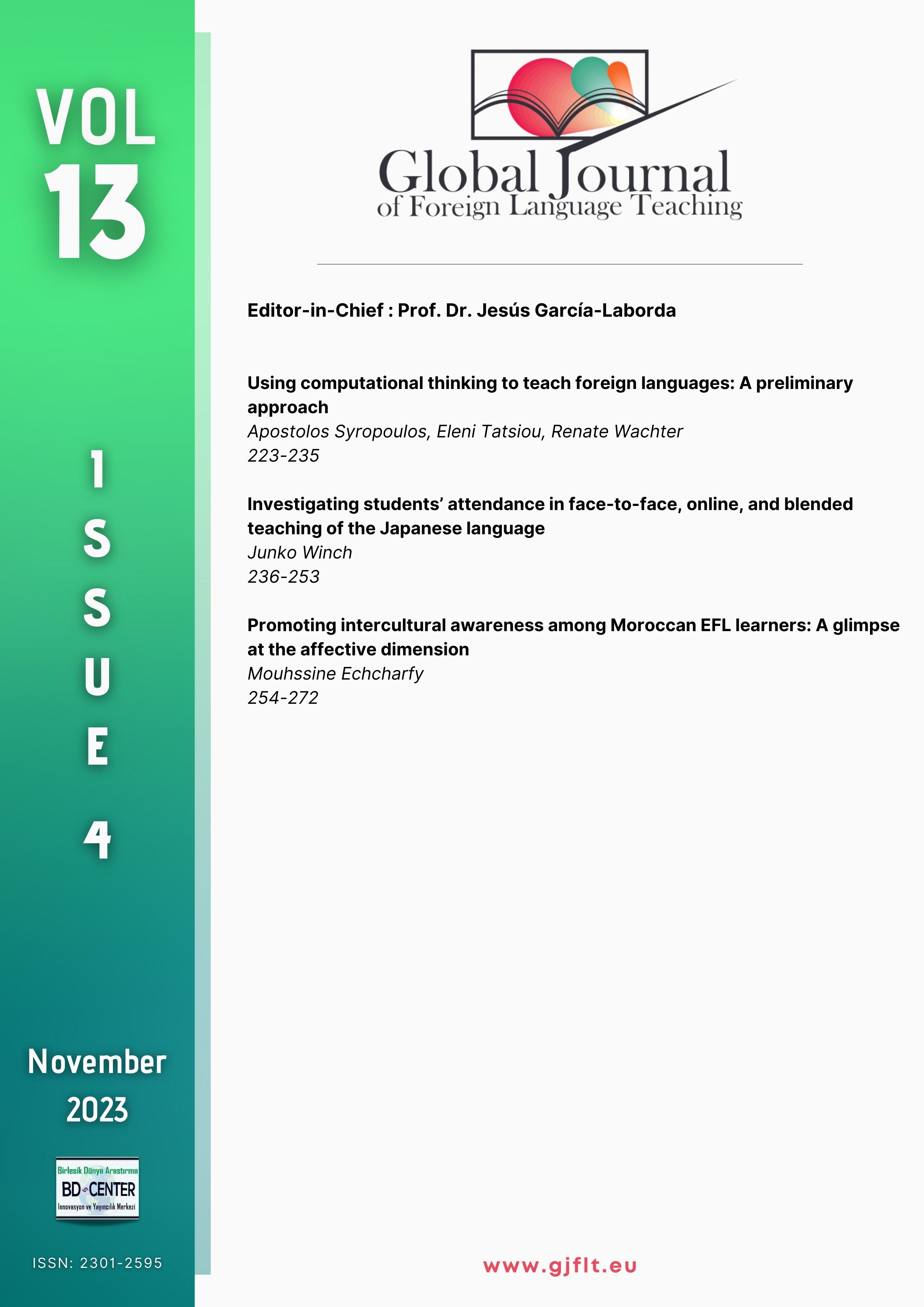Using computational thinking to teach foreign languages: A preliminary approach
Main Article Content
Abstract
Computational thinking is a teaching methodology that has been successfully applied to STEM education. However, its use outside STEM education seems to be quite limited. This study aims to report a small-scale experiment in which a small group of students were taught elements of the Greek language using STEM education methodology. Since computational thinking is mainly about algorithms and their use in teaching, the study has used some tools to implement the corresponding ideas. The results of this project are encouraging and the study indicates that language learning can greatly benefit from using computational thinking.
Keywords: Abstraction; Algorithm; Computational Thinking; Language Learning; Teaching.
Downloads
Article Details

This work is licensed under a Creative Commons Attribution-NonCommercial-NoDerivatives 4.0 International License.
Authors who publish with this journal agree to the following terms:- Authors retain copyright and grant the journal right of first publication with the work simultaneously licensed under a Creative Commons Attribution License that allows others to share the work with an acknowledgement of the work's authorship and initial publication in this journal.
- Authors are able to enter into separate, additional contractual arrangements for the non-exclusive distribution of the journal's published version of the work (e.g., post it to an institutional repository or publish it in a book), with an acknowledgement of its initial publication in this journal.
- Authors are permitted and encouraged to post their work online (e.g., in institutional repositories or on their website) prior to and during the submission process, as it can lead to productive exchanges, as well as earlier and greater citation of published work (SeeThe Effect of Open Access).
